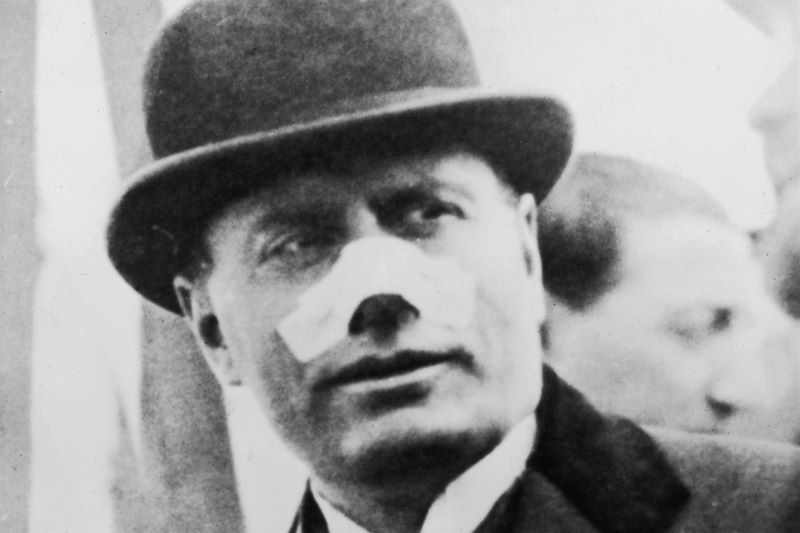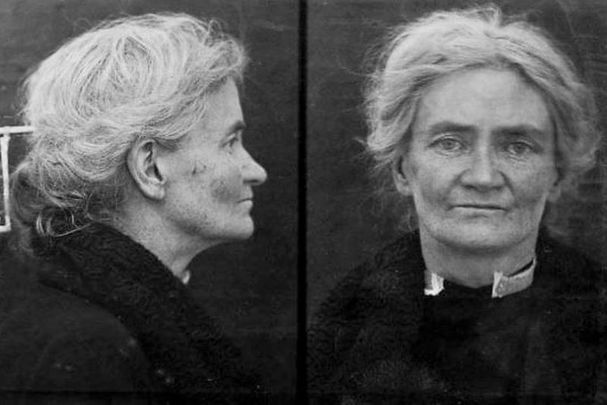Violet Gibson, the Irish woman who shot Italian fascist Benito Mussolini in the face in 1926, is set to be commemorated with a plaque at her childhood home in Dublin.
Dublin City Council (DCC) this week approved a motion introduced by Independent Councillor Mannix Flynn late last year which sought to commemorate the Irish woman Violet Gibson.
In his motion presented in December, Flynn requested “that this committee of DCC support the erection of a plaque to commemorate and honour the actions of Violet Gibson who shot Mussolini wounding him in 1926.
“Born in Dalkey and raised in Merrion Square, Violet Gibson was a committed anti-fascist.
“After Gibson's failed attempt, she was set upon by Mussolini's supporters, and would likely have been lynched had the police not stepped in and arrested her.
“She suffered various cruelties and indignities within the fascist prison system, and was then deported to England, sparing the Italians the embarrassment of a public trial. Her family had secretly arranged to have her committed to an asylum – St. Andrew’s Hospital in Northampton, where Lucia Joyce, James Joyce's daughter, would later be committed.
“Despite repeated pleas for her freedom, she spent the rest of her life in St. Andrew’s, dying in 1956.
“It suited both the British authorities and her family to have her seen as "insane" rather than as political.
“It is now time to bring Violet Gibson into the public’s eye and give her rightful place in the history of Irish women and in the rich history of the Irish nation and its people.”
The Commemorations and Naming Committee approved the application for the erection of a Dublin City Council Commemorative plaque to commemorate Violet Gibson, subject to the approval of the owners of the building being given.
According to RTE, the aim is to have the plaque dedicated to Gibson erected at her childhood home of 12 Merrion Square in Dublin. If the current owners of the property do not consent, the plaque could be placed on an adjoining property.
Violet Gibson and Benito Mussolini
Violet Gibson’s upbringing was one of privilege. Her father was made 1st Baron Ashbourne and went on to serve as Lord High Chancellor of Ireland from 1885 to 1905. She grew up dividing her time between Dublin and London, and at the age of 18 was a debutante in the court of Queen Victoria.
It was noted, however, that as a child Gibson was often sick with scarlet fever, pleurisy, bouts of ill-defined "hysteria" and that she had a “violent temper.” During her younger years, she also showed an interest in Christian Science and then theosophy, but at the age of 26 in 1902, she converted to Catholicism.
By 1913, Gibson had been married to an artist and widowed. She then moved to Paris and worked for pacifist organizations. In that same year, she contracted Paget's disease (an abnormal breakdown of bone tissue) and a mastectomy left her with a nine-inch scar. She then returned to England where surgery for appendicitis left her with chronic abdominal pain.
Gibson became more and more obsessed with religion during her 40s. She went on retreats, followed the Jesuit scholar John O'Fallon Pope and became fixated on the ideas of martyrdom and "mortification."
By 1922, she had had a nervous breakdown and was committed to a mental asylum having been declared insane. Two years later, along with a nurse named Mary McGrath, she traveled to Rome where she lived in a convent. By this point, she was convinced that God wanted her to kill someone as a sacrifice.
In February 1925, Gibson got hold of a gun and shot herself in the chest. Miraculously, she survived.
In March 1926, Gibson’s mother passed away. By April of that year, her obsession with killing someone had refocused; it was now trained on Mussolini.
On the fateful day of April 7, Gibson went to Palazzo del Littorio with her gun wrapped in a black veil, and a rock, in case she needed to break Il Duce’s car windshield. While Il Duce drove through Rome's Piazza del Campidoglio after leaving an assembly of the International Congress of Surgeons, where he had delivered a speech on the wonders of modern medicine, Gibson jumped from the crowd and shot the leader.

May 13, 1926: Benito Mussolini leaving for Tripoli. His nose is bandaged after an assassination attempt on 26th April by Violet Gibson, who shot him with a revolver at close range. (Getty Images)
Her rock was unnecessary as the leader walked among the crowds just feet from Gibson. Her first shot grazed his nose and on the second shot, the gun misfired. The fascist leader stayed very calm and told the crowds “Don't be afraid. This is a mere trifle." Mussolini was only slightly injured and after having his nose bandaged he continued his parade.
Later, he said that while he was ready for “a beautiful death” he did not want to die at the hands of an “old, ugly, repulsive" woman.
In custody for her crimes, Gibson said she shot Mussolini “to glorify God,” who had sent an angel to keep her steady.
The Gibson family wrote to the Italian government to apologize for her actions. Gibson was then declared a "chronic paranoiac" and returned to England and St Andrew's Hospital. She died in 1956. There were no mourners at her funeral.
Benito Mussolini was finally killed on April 28, 1945, during the final days of World War II. He and his mistress were taken to Milan and left in a suburban square hanging upside down from a metal girder above a service station.

Love Irish history? Share your favorite stories with other history buffs in the IrishCentral History Facebook group.




Comments